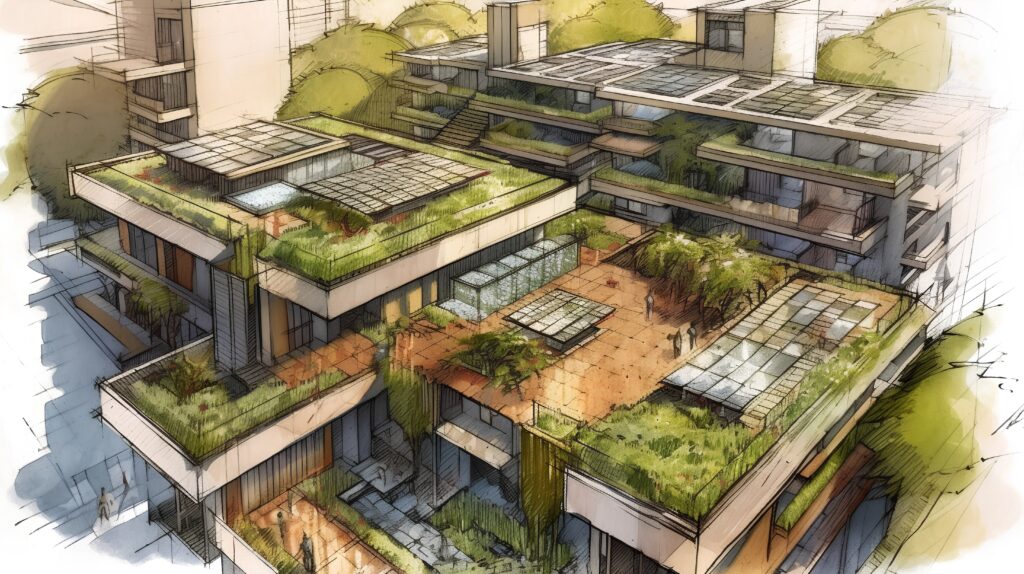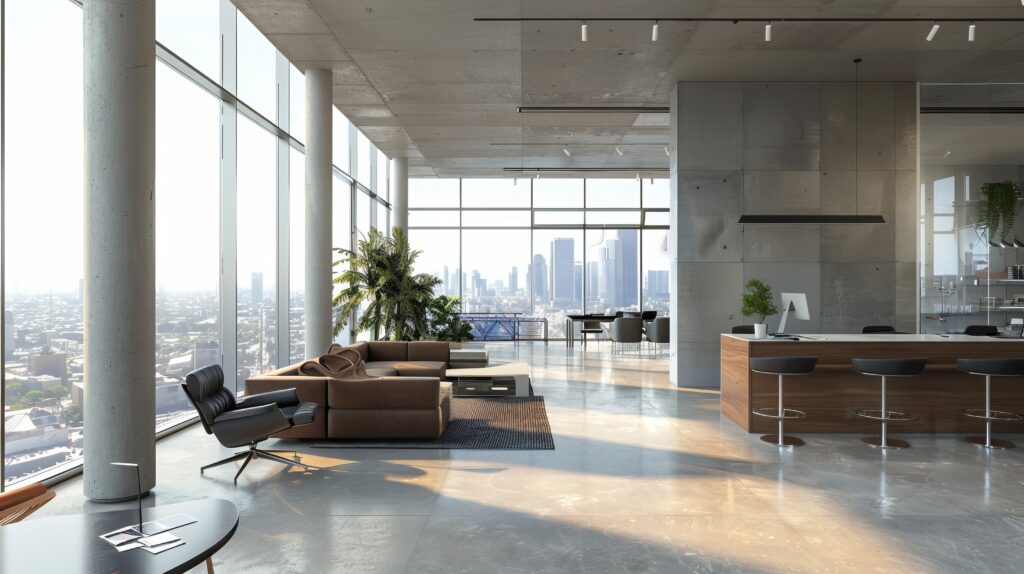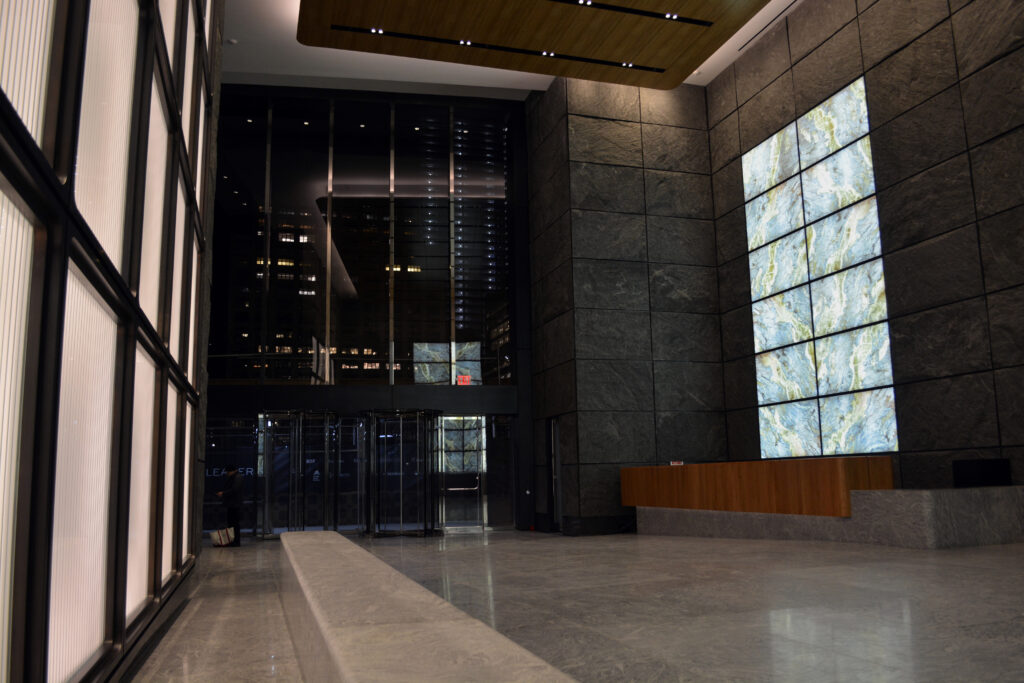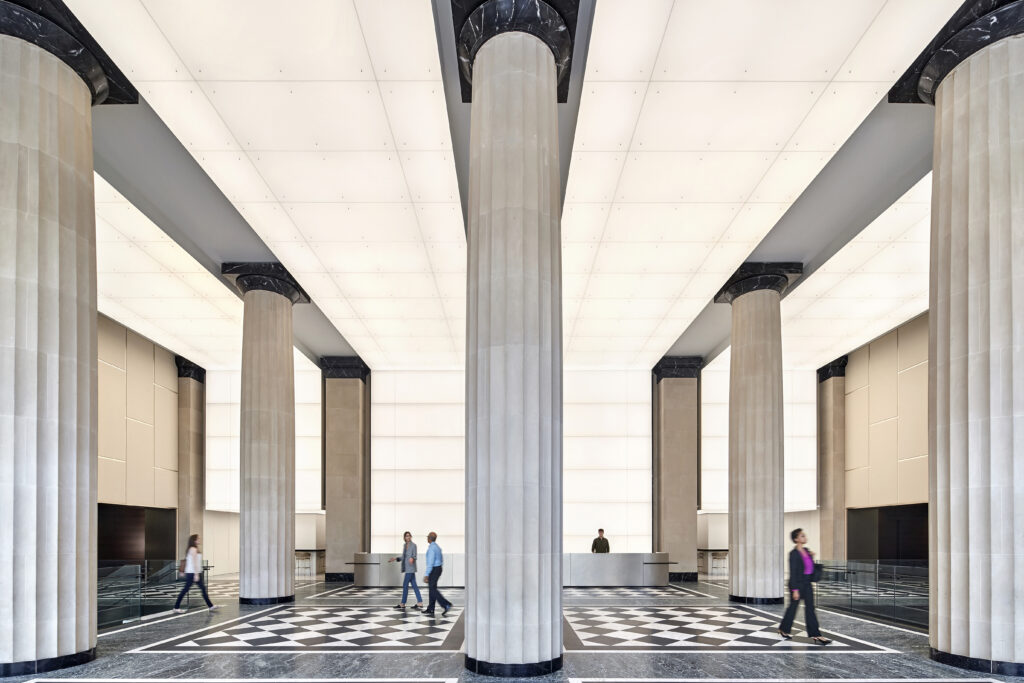The Rise of Biophilic Design
Design Dialogue: Exploring Trends in the Design and Architectural Industry
Biophilic design represents a paradigm shift in the way we conceive and interact with built environments. At its core, it seeks to emulate the innate human connection to nature within the context of architecture and design. It encompasses various elements that contribute to human well-being and comfort. Among these elements, lighting design plays a crucial role in creating spaces that evoke the restorative qualities of the natural world.

Sketch of sustainable urban architecture, featuring green roofs and solar panels. Eco friendly design, energy efficiency, carbon neutral buildings, and biophilic elements for smart city. Generative AI
Natural light, often referred to as the “golden standard” in lighting design, is a fundamental component of biophilic spaces. Its dynamic qualities, changing intensity, and color temperature throughout the day mimic the natural rhythms of the sun, which have been shown to influence our circadian rhythms and overall health positively. By maximizing access to natural light through thoughtful architectural design, such as strategically placed windows, skylights, and light wells, architects can create environments that promote productivity, focus, and vitality.

However, in spaces where access to natural light is limited, artificial lighting becomes paramount. This is where innovative lighting solutions come into play. Backlit design features that seamlessly integrate lighting into architectural elements, enhancing their aesthetic appeal while also creating immersive and biophilic environments.
Backlit features, whether they be translucent panels, illuminated surfaces, or custom light fixtures, have the ability to mimic the qualities of natural light, such as warmth, depth, and movement. By carefully orchestrating the interplay of light and materials, you can transform static architectural elements into dynamic focal points that evoke the serenity and beauty of natural landscapes.

55 Hudson Yards | New York, NY | GPI Design
Incorporating backlit design features into biophilic spaces not only enhances their visual impact but also reinforces the connection to nature. Especially when using backlit stone, you are enhancing what Mother Nature already has to offer.
By seamlessly integrating lighting design with biophilic principles, architects and designers can create spaces that foster a deeper connection to nature, regardless of the constraints of the built environment. As pioneers in the field of backlit design features, GPI Design continues to push the boundaries of innovation by offering solutions that not only elevate the aesthetic quality of spaces but also contribute to the health, happiness, and productivity of their occupants.

Franklin Square | Washington, D.C. | GPI Design
Lighting design plays a vital role in biophilic design, serving as a means to evoke the restorative qualities of the natural world within architectural spaces. Through innovative solutions such as backlit design features, GPI Design likes to put itself at the forefront of transforming environments into immersive and biophilic experiences that enhance human well-being and connection to nature.
